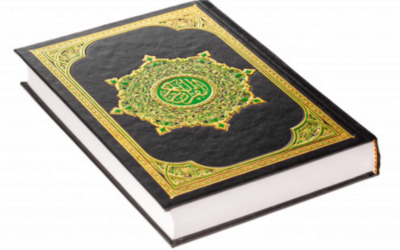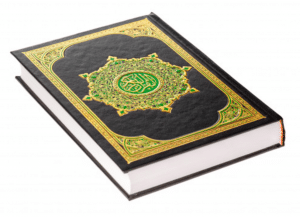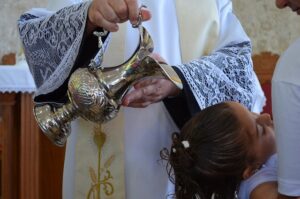“Then He said to them, ‘My soul is deeply grieved, to the point of death; remain here and keep watch with Me.’ 39 And He went a little beyond them, and fell on His face and prayed, saying, ‘My Father, if it is possible, let this cup pass from Me; yet not as I will, but as You will (Matthew 26:38-39, NASB).'”
Muslim argument
There are a number of Muslims who state that Matthew 26:38-39 teaches that Jesus was not crucified.1 They base their viewpoint by combining Matthew 26:38-39 and Hebrews 5:7. Some Muslims believe that Jesus prayed to be delivered from death with the words “let this cup pass” and God answered that prayer by delivering Jesus from the crucifixion.
Response
Hebrews 5:7
I have already dealt with Hebrews 5:7 in a separate article (see: Does Hebrews 5:7 deny the Crucifixion of Jesus?) where I pointed out that (1) the text never says that God spared Jesus from dying on the cross, only that Jesus prayed to be delivered; (2) the context of Hebrews 5:7 is where the author quotes a Messianic Psalm (Psalm 22:24) which prophecies to the death of Jesus by crucifixion (Psalm 22:16) and His subsequent triumph; (3) Jesus was delivered from death in the greatest sense by triumphing over it through God raising Him from the dead, which was an answer to His prayer for deliverance; and (4) there are numerous passages in the book of Hebrews which teach that Jesus died by crucifixion (cf. Hebrews 2:9-10, 14; 6:6; 7:27; 9:11-28; 10:1-39; 10:10; 11:17-19; 12:2; 12:24; 13:12; 13:20-21). Therefore, Hebrews 5:7 does not teach that God spared Jesus from being crucified. Rather, God delivered Jesus from death by raising Him from the dead.
Matthew 26:38-39
The Context
In order to understand the context of Jesus’ prayer in the Garden of Gethsemane in Matthew 26:38-39, it is important to first understand the context of Matthew 26. In this chapter, Jesus makes some interesting statements about His coming death.
When talking to the disciples, He said, “You know that after two days the Passover is coming, and the Son of Man is to be handed over for crucifixion,” (Mt. 26:2).
When the woman anoints Jesus’ feet with a box of precious oil, Jesus says, “For you always have the poor with you; but you do not always have Me. 12 For when she poured this perfume on My body, she did it to prepare Me for burial.13 Truly I say to you, wherever this gospel is preached in the whole world, what this woman has done will also be spoken of in memory of her,” (Mt. 26:11-13).
When breaking the bread while He was performing the first Lord’s Supper, He said, “‘…Take, eat; this is My body.’2 27 And when He had taken a cup and given thanks, He gave it to them, saying, “Drink from it, all of you; 28 for this is My blood of the covenant, which is poured out for many for forgiveness of sins,” (Mt. 26:27-28).
Likewise, later on in the same passage, Jesus says, “You will all fall away because of Me this night, for it is written, ‘I WILL STRIKE DOWN THE SHEPHERD, AND THE SHEEP OF THE FLOCK SHALL BE SCATTERED.’ 32 But after I have been raised, I will go ahead of you to Galilee,” (Mt. 26:31-32).
Therefore, from the context of Matthew 26, Jesus clearly believed that He was going to be crucified (Mt. 26:2), buried (Mt. 26:11-13), his blood would be poured out to forgive sins (Mt. 26:27-28), and he would be struck down and resurrected from the dead (Mt. 26:31-32). All of these statements by Jesus indicate that He knew that He was going to die by crucifixion.
The Garden of Gethsemane
In Matthew 26:38-39, Jesus is praying in the Garden of Gethsemane, being deeply grieved about the sufferings that He is going to face. The Gospels record that He sweat great drops of blood, a condition known as hematidrosis where blood can be secreted in the sweat due to tremendous amounts of stress. 3
Since Jesus was a man, He despised having to endure the shame of the cross (Heb. 12:2). However, He surrendered His will to God’s plan by saying “yet not as I will, but as You will” and willingly endured the cross. Jesus never says in this passage that He is not going to be crucified.
Why did Jesus pray to “let this cup pass”?
However, Muslims often wonder, if Jesus knew He was going to face crucifixion, why did He pray to the Father to not face crucifixion?4
In response, Jesus was both God (John 1:1; 8:24) and man (John 1:14). As man, he faced the realities of pain and suffering. Like any normal human being, Jesus did not want to have to face the rigors of the crucifixion events, but He willingly accepted God’s plan as the context of the Gospel of Matthew, the other Gospels, and the rest of the New Testament indicates. Furthermore, it is true that the disciples did not expect Jesus to be crucified since they wanted a reigning political Messiah who would triumph over the Romans. This was consistent with the Jewish Messianic expectations of the first century. However, Jesus radically departed from this norm and suffered in His first coming (cf. Is. 52:13-53:12).
The Crucifixion
The Gospel of Matthew clearly teaches that Jesus was crucified (Mt. 27:33-56). For a Muslim to argue that Jesus was not crucified does not make sense both with the context of Jesus’ statements in Matthew 26, the rest of the Gospel of Matthew, the rest of the Gospels (see Mark, Luke, and John), the rest of the New Testament (cf. 1 Cor. 15:3-8), and various secular sources.5 This argument based on Matthew 26:38-39 is another failed attempt by Muslims to deny the crucifixion of Jesus.
See Related Articles
References
| 1↑ | See: http://www.missionislam.com/comprel/crucified.htm for an example. |
|---|---|
| 2↑ | This is a symbol or representation. Jesus was not actually saying that He is the bread that the disciples were going to eat any more than when He says He is the door (cf. John 10:1), that we should look for a door with hinges on it. The Bible does not teach that the body and bread are the actual body and blood of Jesus. Rather, they represent the actual body and blood of Jesus. |
| 3↑ | http://www.doctortreatments.com/Diseases_Of_The_Skin/Class_VIII_Diseases_Of_The_Appendages_Diseases_Of_The_Sweat-Glands_Hematidrosis.htm |
| 4↑ | See the arguments of http://www.missionislam.com/comprel/crucified.htm for an example. |
| 5↑ | See Roman historians such as Josephus (Antiquities of the Jews, 18:3) – c. A.D. 90-95 and Tacitus (Annals, 15:44) – c. A.D. 115; also look at other secular sources such as Lucian (The Death of Peregrine, 11-13) – 2nd Century A.D.; Mara Bar Serapion (Letter at British Museum) – Late 1st to Early 3rd Centuries A.D.; and even the Jewish Talmud (Sanhedrin 43a) – c. A.D. 70-200 |






